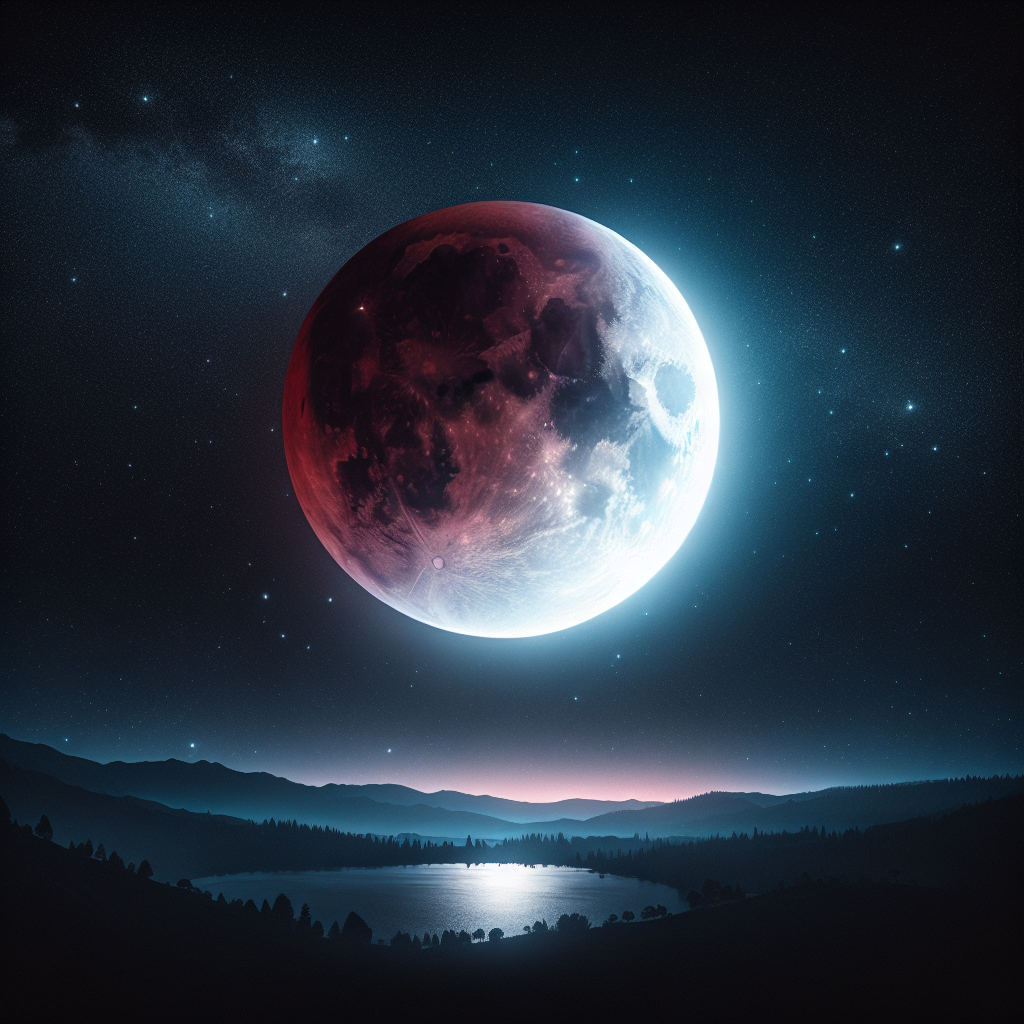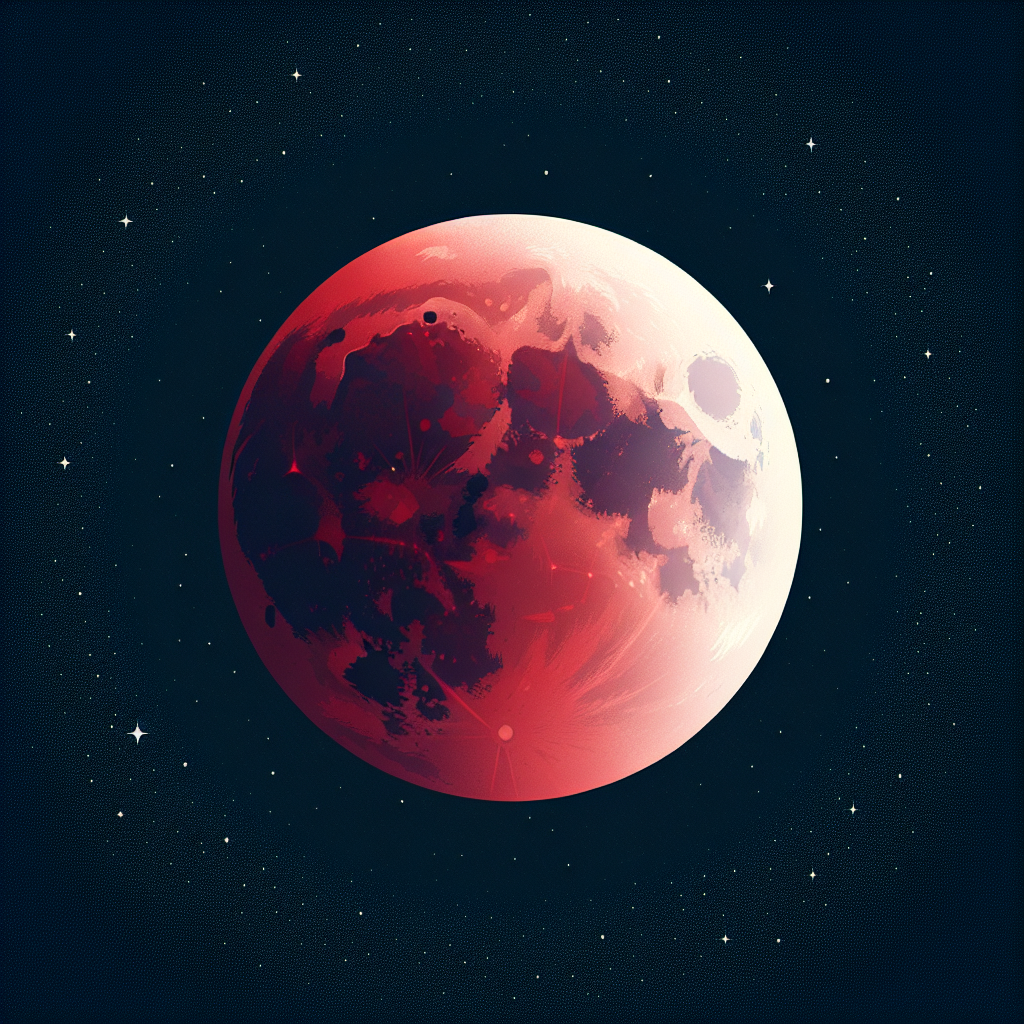As an Amazon Associate I earn from qualifying purchases.
Lunar eclipses have long held a profound significance in human history, often interpreted as powerful omens or sacred events by various cultures across the world. These celestial spectacles occur when the Earth positions itself between the sun and the moon, shrouding the moon in shadow and sometimes casting it in a haunting reddish hue, known as a “Blood Moon.” From the Sumerians and Babylonians to the Incas and the Greeks, lunar eclipses have swayed the tides of human ritual and mythology, with each culture perceiving and marking these events in a unique manner.
In ancient Mesopotamia, a lunar eclipse was seen as a direct assault on the king. The rituals undertaken were elaborate and strategic, with a common man temporarily placed on the throne as a decoy, intended to bear any potential ill-fated consequences during the eclipse. Such rituals underscore the eclipse's impact on societal structures and the lengths to which civilizations would go to mitigate perceived celestial threats. Today, the rituals surrounding lunar eclipses continue to evolve, often blending modern understanding with traditional beliefs.
The Hindu tradition during a lunar eclipse, known as a Chandra Grahan, is one of reverence and caution. Devotees often engage in fasting and perform ritual baths, known as a sacred dip in a river, to cleanse themselves spiritually. Temples ring with the sound of bells, and prayers are chanted for protection and the dispelling of negativity, thought to be heightened during the eclipse. The emphasis on purification represents not only a physical cleanse but also a spiritual homecoming, underscoring life's cyclical nature akin to the phases of the moon.
For the indigenous Hupa tribe of Northern California, a lunar eclipse signifies the moon's illness or poisoning and requires urgent healing. Within this community, rituals are conducted by the tribe's medicine men to cleanse and restore the moon's health. The Hupa's ceremonial songs and dances are believed to aid in the moon's recuperation, illustrating the community's symbiotic relationship with celestial bodies and the active role they take in maintaining cosmic balance.
The charging of crystals under the light of a lunar eclipse is a contemporary practice adopted by many within new age and neopagan communities. This ritual is grounded in the belief that the unique energies of an eclipse can enhance the natural properties of crystals, such as quartz or amethyst. Participants often set intentions, seeking emotional healing or spiritual growth, and place their chosen stones in direct moonlight to absorb the eclipse's potent energies.
In the realm of secular observation, lunar eclipses offer an extraordinary opportunity for astronomers and the curious public alike to witness the mechanics of our cosmos in real-time. Community viewing parties and online live streams attract millions worldwide, fostering a sense of unity in collective experience. Statistically speaking, NASA reports that lunar eclipses are observed by millions of people each time they occur, which highlights the continued intrigue and excitement these celestial events generate.
In Theravada Buddhism, lunar eclipses are believed to possess strong karmic influence. Monks in countries like Thailand, Sri Lanka, and Myanmar often lead the laity in special chanting sessions and meditation that last throughout the eclipse. The shared belief is that such acts of merit can help neutralize the negative karma believed to be amplified during the eclipse, offering an opportunity for spiritual growth and enlightenment.
Lunar eclipses have long been a source of mystique, wonder, and inspiration. Across different cultures and traditions, these celestial events have spawned a variety of rituals designed to harness their perceived power or mitigate their supposed influence. Here are 15 rituals from various cultures that have been associated with lunar eclipses:
1. **Moon Bathing:** In some cultures, it's believed that the energy during a lunar eclipse is particularly potent, and ‘bathing' in the moonlight (exposing oneself to the eclipse) can help absorb this energy.
2. **Chanting and Prayer:** During lunar eclipses, Hindus often recite mantras such as the Chandra Mantra to seek the blessings of the moon. They may also pray to specific deities for protection during the eclipse.
3. **Meditation:** Many people find lunar eclipses to be an ideal time for deep meditation, due to the powerful cosmic energies at play. It’s a time for introspection and seeking higher wisdom.
4. **Cleansing Rituals:** In several traditions, eclipses are seen as a time to purge negativity. Smudging with sage or bathing in salt water are common practices for spiritual cleansing.
5. **Charge Crystals:** It's common within new age and metaphysical communities to place crystals outside during a lunar eclipse as a way to recharge them with the celestial energy.
6. **Protecting Pregnant Women:** In various cultures, including some in India and Latin America, there’s a belief that pregnant women and their unborn children are vulnerable during an eclipse, so they are advised to stay indoors and carry protective amulets or symbols.
7. **Covering Food and Water:** It’s a common practice in some Asian cultures to cover food and drink water with a cloth during the eclipse to protect it from harmful energies.
8. **Bloodletting Ritual:** The ancient Mayans believed that lunar eclipses were caused by a jaguar attacking the moon, and they engaged in bloodletting to appease the celestial jaguar.
9. **Offerings to Deities:** Many people leave offerings out during a lunar eclipse for various deities, especially those associated with the moon, such as the Roman goddess Diana or the Greek goddess Artemis.
10. **Yoga Practices:** Specific yoga practices, with a focus on Chandra Namaskar (Moon Salutations), are often performed to honor the moon and align oneself with its energies.
11. **Tarot Readings:** Lunar eclipses are seen as a powerful time for divination. Tarot readings during this period are believed to reveal deeper truths and provide clearer guidance.
12. **Gathering in Groups:** Some individuals gather in groups to observe and celebrate the eclipse, creating a shared spiritual experience that intensifies the collective energy.
13. **Creating Art or Music:** The awe-inspiring sight of a lunar eclipse can drive artistic expression. Artists and musicians may create works during or after eclipses to capture the event's essence.
14. **Gardening by the Moon:** Biodynamic farmers and gardeners may regard lunar eclipses as important moments for planting or tending to crops, following ancient traditions of agricultural planning by lunar phases.
15. **Renewal Ceremonies:** A lunar eclipse may be viewed as a time for personal and spiritual renewal, with rituals designed to symbolize casting off old habits and embracing new beginnings.
Lunar eclipses continue to captivate human imagination and spirituality, with these rituals forming an integral part of how different cultures engage with these celestial events. According to NASA, lunar eclipses happen relatively frequently, with at least two to five occurring each year, though not all are visible worldwide. This consistent cycle ensures that rituals and traditions surrounding lunar eclipses remain active and integral components of cultural practices around the globe.
1. What is a lunar eclipse and how does it occur?
A lunar eclipse happens when the Earth comes between the Sun and the Moon, casting its shadow on the Moon. This can only occur during a full moon when the Sun, Earth, and Moon align perfectly or very closely, with the Earth in the middle.
2. Are lunar eclipses safe to watch with the naked eye?
Yes, unlike solar eclipses, lunar eclipses are completely safe to watch with the naked eye. There is no need for protective glasses or equipment to observe a lunar eclipse.
3. How often do lunar eclipses occur?
Lunar eclipses happen at least twice a year but can occur as many as five times in a year. However, not all of these are visible from any given location on Earth.
4. What is the significance of lunar eclipse rituals?
Lunar eclipse rituals hold various significances across different cultures and spiritual beliefs. They are often seen as times for reflection, releasing negative energy, and setting intentions for personal growth and transformation.
5. Can I create my own lunar eclipse ritual?
Yes, you can create your own lunar eclipse ritual. Personalizing a ritual to reflect your intentions, beliefs, and what feels meaningful to you can make the experience more powerful.
6. Are there any foods or drinks that are traditional during lunar eclipse rituals?
Traditions vary widely, but some cultures have specific foods and drinks that are consumed during lunar eclipse rituals, often symbolizing purification or renewal. Research your own cultural practices or create a personal tradition that resonates with you.
7. How can I know when the next lunar eclipse will occur?
To find out when the next lunar eclipse will occur, you can check astronomical calendars, local news, weather websites, or use mobile apps dedicated to celestial events.
8. Is it necessary to perform rituals during a lunar eclipse?
No, it is not necessary to perform rituals during a lunar eclipse. Participation in such activities is entirely a personal choice and may depend on one's cultural background or individual interests.
9. What if the lunar eclipse is not visible from my location?
If a lunar eclipse is not visible from your location due to geographic location or weather conditions, you can still participate in rituals or simply take the time for self-reflection. Additionally, you may be able to watch a live stream of the eclipse online.
10. Do lunar eclipses have any physical effects on people or the environment?
There is no scientific evidence to suggest that lunar eclipses have any direct physical effects on people or the environment. However, some individuals may ascribe certain psychological or spiritual effects to the event based on their beliefs or experiences.

Conclusion
Throughout the article, we examined a diverse array of rituals and practices associated with lunar eclipses, reflecting the deeply rooted cultural and spiritual significance of this celestial event across various societies. From the ancient Mesopotamian practice of substituting kings to avoid celestial wrath to contemporary Wiccan ceremonies aimed at harnessing the moon's transformative energy, it is evident that the phenomenon of a lunar eclipse holds a unique place in human consciousness. These rituals often center around themes of renewal, protection, and reflection, with many traditions viewing the temporary dimming of the moon as a powerful moment for personal and communal growth.
Additionally, we explored how different cultures utilize the time of a lunar eclipse to engage in practices aimed at fostering connection with the divine, healing, and the casting or removal of curses. For instance, the Hindu tradition of performing the “Chandra Grahan” mantra to seek divine blessings contrasts with the Native American custom of observing quiet contemplation and fasting during the eclipse. Regardless of the varied approaches, what unifies these rituals is the recognition of lunar eclipses as moments of potent potential, offering a pause for individuals and communities to introspect, re-energize, and align themselves with the natural rhythms of the cosmos. These insights not only underscore the eclipse's enduring mystique but also highlight humanity's ongoing quest to find meaning in the movements of the heavens.
Amazon and the Amazon logo are trademarks of Amazon.com, Inc, or its affiliates.


